Organic food and drink has seen steady growth in recent years, especially among younger generations. Organic tequila is growing faster than other spirit segments, thanks to consumer trends around health, authenticity, sustainability, and premiumization. In response, a number of tequila producers have stepped up with certified organic tequilas to appeal to these conscious consumers.
According to the Agave Matchmaker database, there are currently 22 tequila distilleries with USDA Organic certification, so we thought it would be interesting to compare products from different distilleries in a blind tasting with members of the Agave Matchmaker tasting panel. Do they have a similar aroma and flavor profile? And are they different from non-organic products?
To find out we selected 10 high-quality organic blancos, all from different distilleries, to see how they compared when tasted blind by 22 members of our tasting panel.
Before we get into the results, let’s get into some interesting facts and clear up misconceptions about organic tequilas.
-
– Organic agave fields are typically full of weeds that can cover the agave plants, as seen in the photo above. Some farmers will cut the weeds back by hand, or allow animals (horses, mules, cows, etc) to eat the weeds. Herbicides and pesticides are not allowed to be used unless they can come from natural, certified organic sources.
– To earn an organic certification, a distillery must use 95% of their materials from traceable organic sources. This leaves 5% for non-organic ingredients.
– If a product is “certified organic”, it does not mean that it’s additive free. As mentioned above, that extra 5% leaves plenty of room for non-organic additives. Plus, organic additives are also available.
– The USDA does not employ inspectors. Instead, they rely on independent agencies to perform the required annual on-site inspections and lengthy documentation audits. That’s why distilleries in other countries can still obtain a USDA certification.
– The USA isn’t the only country with rules for organic certification. Europe and Japan, for example, have their own set of requirements. The same agencies that are authorized to perform USDA inspections are usually also capable of certifying products for these other countries.
– Organic agaves cost more. The non-use of pesticides often results in a lower yield, and farming practices are more labor intensive. As a result, prices are higher. Right now, producers tell us that prices are roughly 50% higher for organic agaves compared with non-organic agaves of the same age. This is why organic tequilas generally cost a little more.
Now let’s get to the results of our blind tasting.
We selected these tequilas because, a) they are all excellent examples of organic tequilas, and b) they are accurate representations of the distillery that makes them. We were most interested in identifying the aromas and flavors that our tasters would find in a blind setting to see if there are any similarities between organic tequilas made at different distilleries.
Trujillo Tahona Blanco
NOM 1634
The tequila that scored the most points for aroma, flavor and finish was Trujillo Tahona Blanco, yet it finished in the middle of the pack, 5th place, when it came to value.
This is a 100% tahona-crushed tequila. Agaves are cooked in brick ovens, then fermented in open air stainless steel tanks without fibers. Distillation happens in copper pots with fibers, and it clocks in at 40% abv.
Trujillo Tahona Blanco, made at the Trujillo Distillery (NOM 1634), stood out in the lineup because it has a mix of cooked agave sweetness and herbal depth. It consistently showed off a wide aromatic range: cooked agave with floral, fruity, and earthy notes. Vanilla, cinnamon, mint, pear, citrus, and even hints of banana bread showed up more than once in the various tasting notes, along with honey and mineral accents that added depth and warmth.
On the palate, it has a creamy, full-bodied texture with roasted agave at its core. Several tasters noted the buttery, slightly oily texture and picked up green and earthy tones like thyme, jalapeño, and fresh soil. Most tasters found it well-rounded, with layers of fruit alongside clove and vanilla.
The finish is peppery with a gentle dryness and a touch of spearmint-citrus sweetness. Overall, Trujillo Tahona Blanco shows off the craftsmanship behind this distillery. It’s expressive, complex, and full of character, offering an aromatic profile that rewards slow sipping and attention to detail.
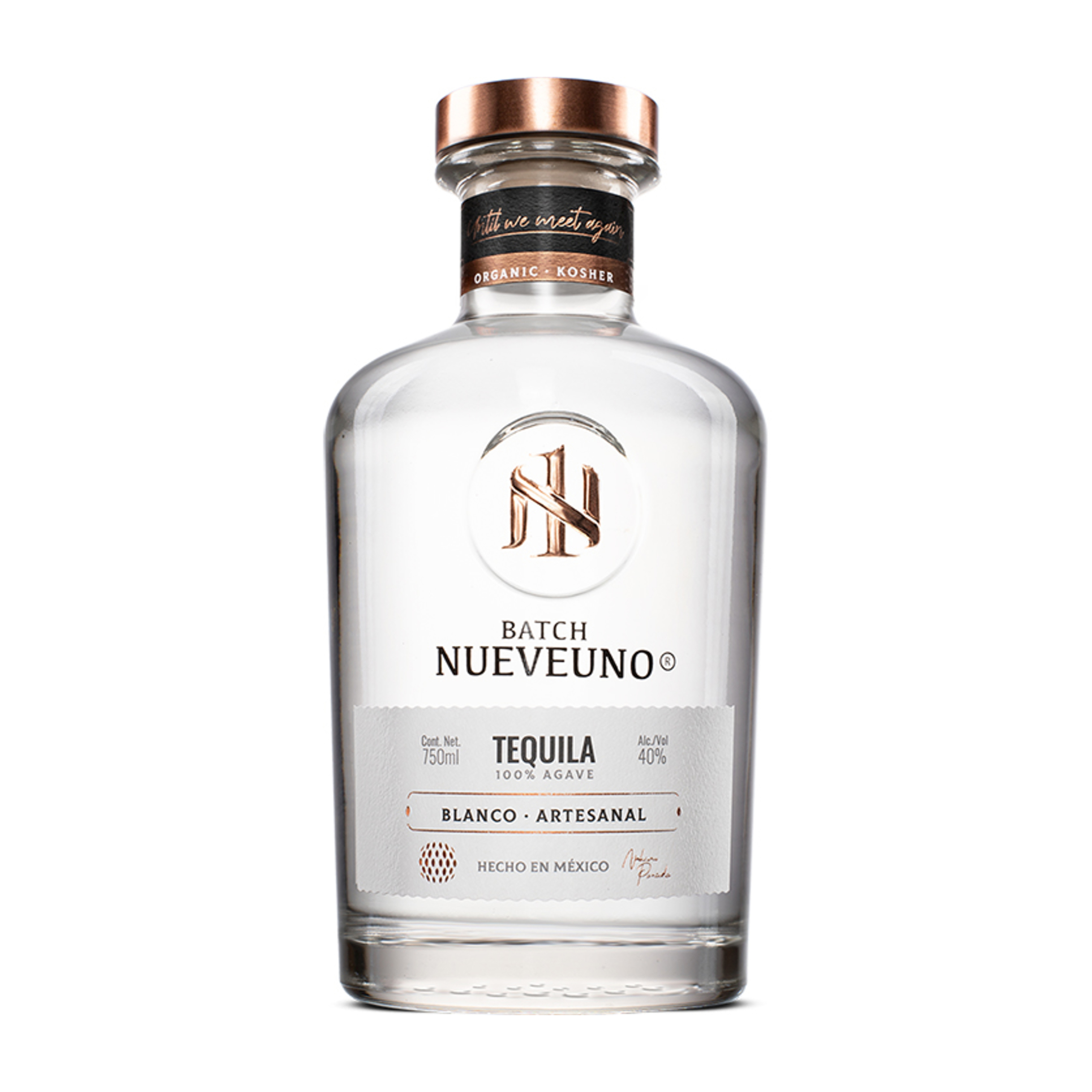
Nueveuno Blanco
NOM 1426
The next highest average score was for Nueveuno Blanco, a tequila made by Nohemi Partida’s team. We’ve placed this tequila in blind tastings before and it always does well.
This is a small batch tequila that doesn’t get enough attention. Mature agaves are cooked slowly in brick ovens, extraction is via roller mill, fermentation is open air, and it’s distilled in stainless steel pot stills.
Made at Rancho Miravalle (NOM 1426) and certified organic, Nueveuno Blanco comes across as bright, grounded, and honest. On the aroma, tasters found cooked agave followed by mint, sage, and a touch of wildflower. There’s plenty of citrus. Lemon and lime for sure, maybe even a hint of orange peel and some earthiness to keep it from feeling too clean. A few tasters caught those savory notes you tend to only find in agave-forward tequilas: olive, green pepper, a little artichoke, and a faint mineral streak running through it.
The palate follows through with that same easy balance. A few found a touch of heat or bitterness, while others got soft, nutty or lactic undertones that added a pleasing depth. One taster called it “almost gin-like.”
The finish is short but satisfying, clean, and peppery. Most agreed it comes across as pure and natural. Overall, Nueveuno Blanco feels like tequila stripped down to its essentials: cooked agave, herbal edges, a little brine, and straight-forward. It’s an easy one to reach for if you like your blancos fresh, honest, and agave-centric.
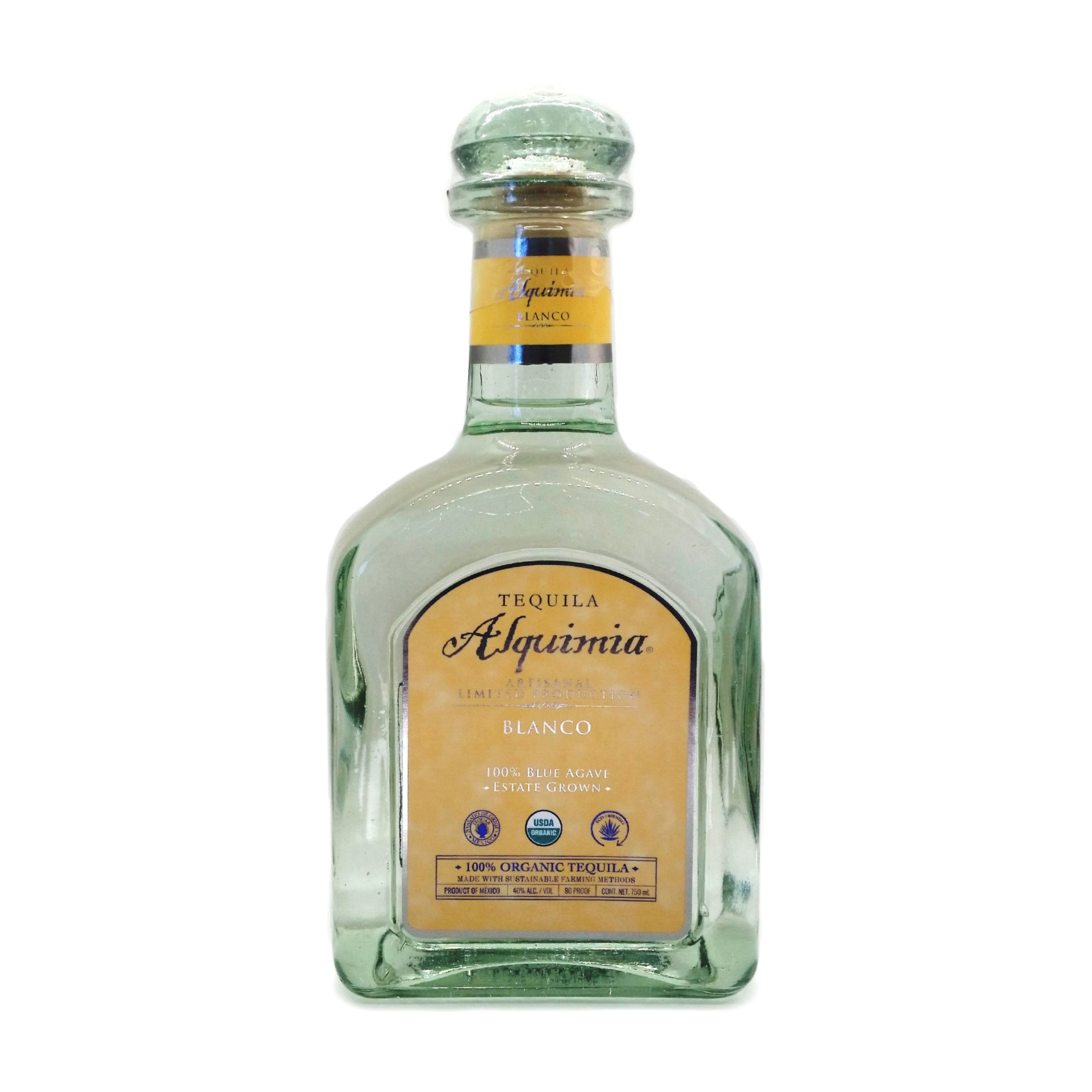
Tequila Alquimia Blanco
NOM 1468
Very close behind, in 3rd place (and in 4th place for value), is Alquimia Blanco. This is a truly small batch tequila made using agaves grown by the brand owner, Don Adolfo Murillo, himself.
If you’re unfamiliar with him, or his brand, there’s one big difference that separates this tequila from the rest. Don Adolfo grows his own organic agave, and only makes a batch when his agave is ready. This means many years will pass between batches. He’s in no rush to cash in, and his product is loved by aficionados as a result.
It is made at Grupo Tequilero México (NOM 1468) in Arandas, Jalisco, and is a long time tequila geek fave, known for its clean, balanced profile and quiet complexity. Our reviewers described the aroma as soft and elegant, led by cooked agave, honey, floral notes, and a touch of citrus. Many picked up natural sweetness, caramelized agave, apple cider, and light vanilla, while others noted minerality, olive, or brine that reflect its Los Altos origin. Some found the nose a bit shy at first, but once it opened up, most agreed it carried a natural freshness and gentle sweetness that felt inviting.
On the palate, Alquimia Blanco starts with sweet cooked agave and light citrus, then moves into peppery, herbal, and mineral territory. Tasters often mentioned its creamy, buttery texture. A few noted faint lactic tones reminiscent of cider or soft cheese, which added rustic depth. The flavor walks that line between sweet and savory. It’s not a bold or flashy tequila, but it’s cohesive and true to the owner’s organic agave.
The finish is moderate, with touches of pepper, mint, and lingering buttery sweetness. A few tasters found it a bit short, while others appreciated its clean fade and subtle warmth. Overall, Tequila Alquimia Blanco is a refined and approachable organic tequila that highlights the natural sweetness of its very special single-estate Los Altos agave. It makes it an elegant choice for those who appreciate balance and authenticity over intensity.
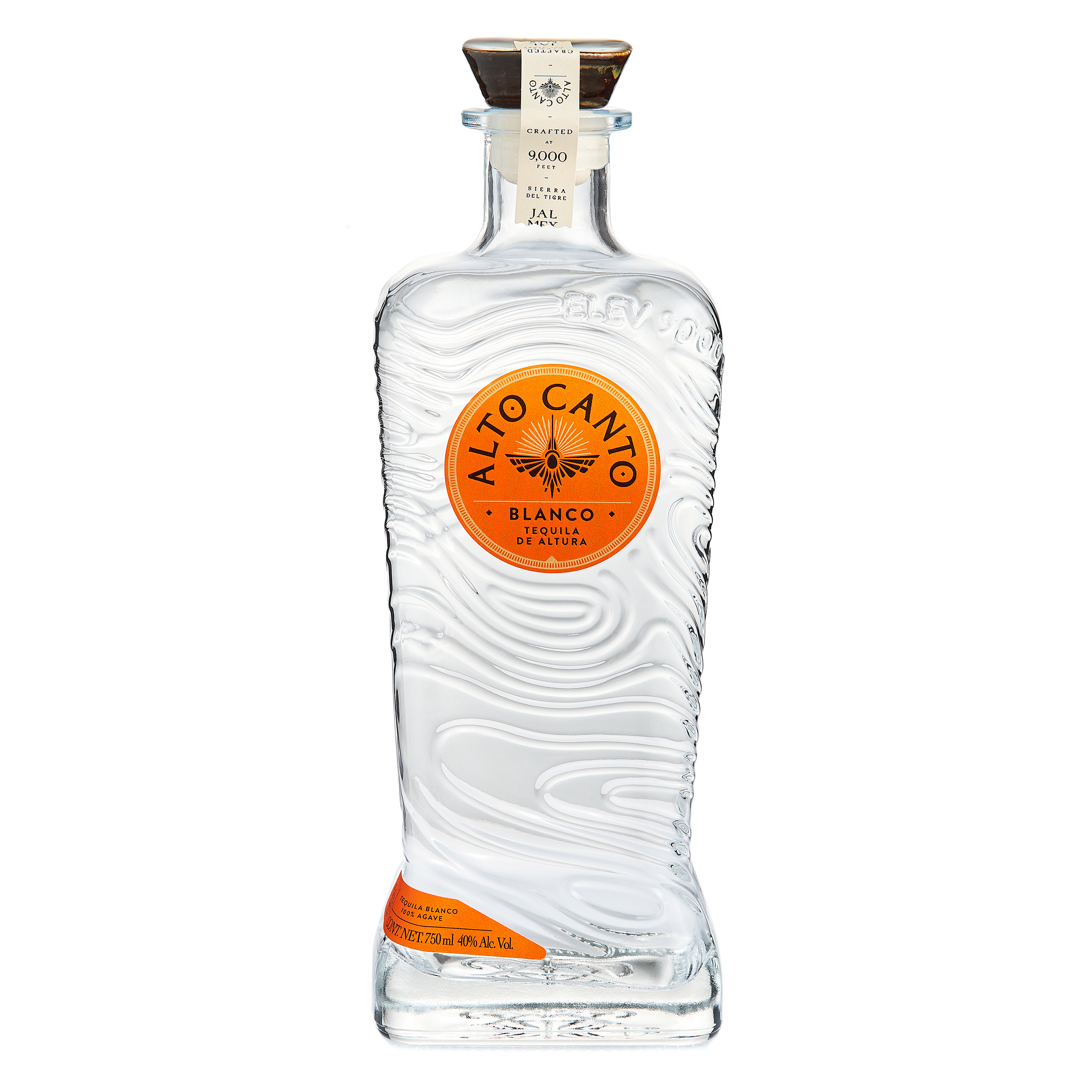
Alto Canto Blanco
NOM 1636
In the 4th slot, and only separated by 0.17 average points, is Alto Canto Blanco. This is a small batch product, 100% tahona crushed, wood tank fermentation, and distilled in small copper pots. As a result, it’s expensive, retailing for $80 USD in some places.
This is not another “contract brand,” because the owner, Daday Suarez, built his own distillery just to produce it. Very rarely will you ever see a new distillery created with the intention of only producing a single brand.
It is made at Tequila El Rocio (NOM 1636) in Valle de Juárez, Jalisco, showcases a distinctive organic profile that blends bright green herbal tones with earthy minerality and subtle sweetness. The aroma was widely praised for its complexity. It features notes of pine, grass, clay, wet earth, and fresh herbs like mint, sage, and thyme. Many tasters described it as “green” and “fresh,” with secondary nuances of citrus (especially grapefruit, lime, and tangerine), floral touches, and mineral “wet stone” character. Though a few found the ethanol slightly pronounced, most appreciated the natural, earthy scent that evoked agave fields after rain.
On the palate, it balances vegetal and mineral notes with underlying agave and citrus. The mouthfeel was described as thick or lightly oily by most of the raters. Overall, it’s an expressive tequila that captures both the rustic, earthy qualities of the high altitude Valle de Juárez terroir and a crisp, garden-fresh vibrancy.
The finish is typically peppery, minty, and slightly bitter, fading into mineral and saline tones. Taken together, Alto Canto Blanco comes across as an adventurous organic tequila. It’s distinctive and bold – a tequila for those who appreciate earthy, and naturally expressive profiles.

Casa Azul Blanco
NOM 1646
In fifth is Casa Azul Blanco, a tequila that recently moved to a new distillery, so if you haven’t tried it in a while you may notice a subtle difference.
Agaves are cooked in brick ovens, extraction with a roller mill, and distillation happens in a copper pot still.
It’s now made at Destiladora La Roca (NOM 1646) in Amatitán, Jalisco, and it’s an organic tequila that sparked a lot of conversation among tasters. It’s an earthy, aromatic tequila with both intrigue and edge.
On the palate, Casa Azul Blanco walks the line between savory and sweet. A few tasters found unique notes of root beer, and even corn masa and tamarind, which added layers of texture. The body leans to creamy and buttery. It’s a tequila that shifts with each sip—earthy, herbal, and spicy one moment, then showing flashes of sweetness the next.
The finish is warm and peppery with a touch of minerality that lingers. Some found a faint bitterness, while others compared its earthy backbone to something like El Tesoro. Overall, Casa Azul Blanco is bold and full of personality, capturing the rugged, mineral-driven character of Amatitán.
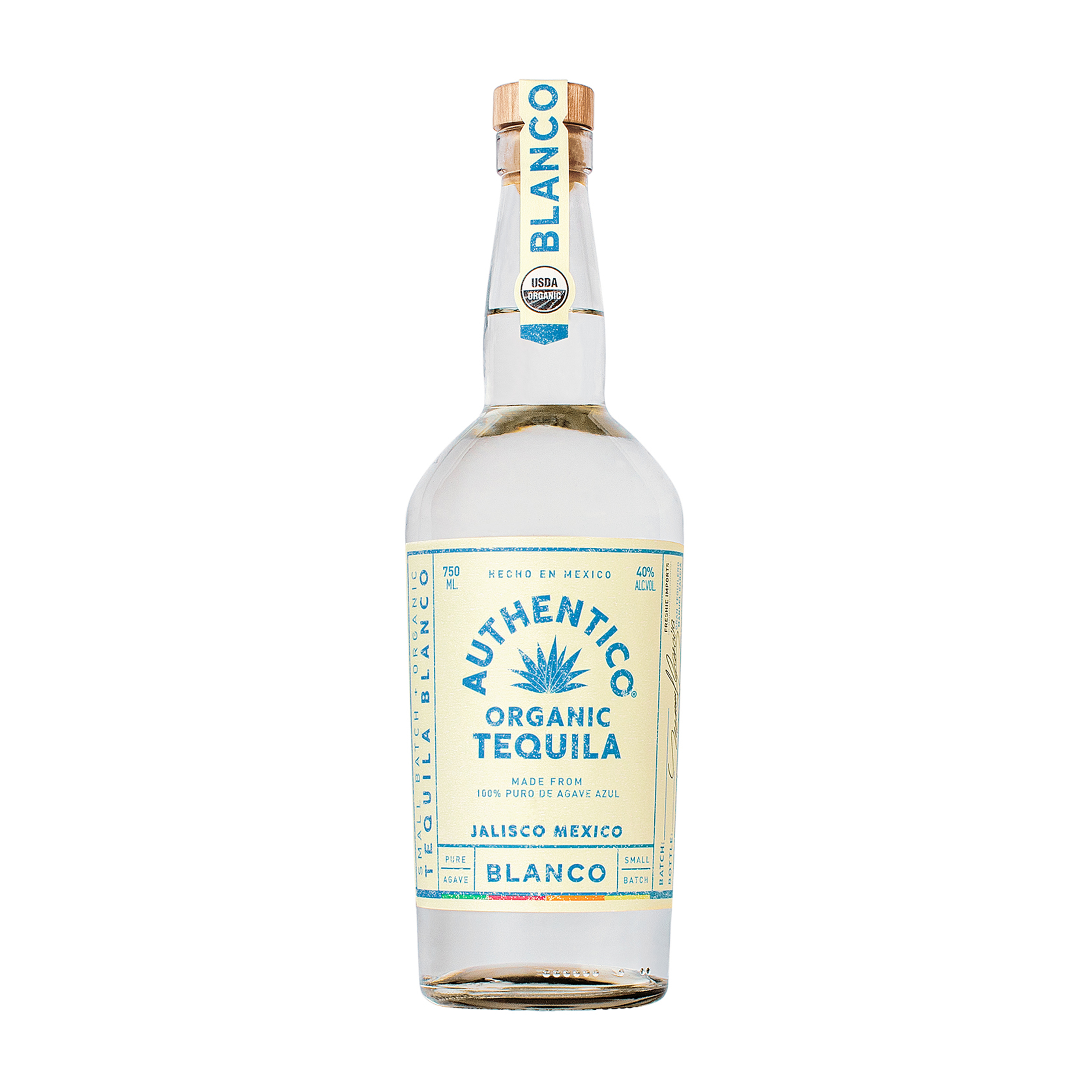
Authentico Blanco
NOM 1124
Next up is Authentico Blanco, which scored high (3rd place) when it comes to value, with an average retail price of $44 USD.
Agaves are cooked in a low pressure autoclave, fermentation happens in closed tanks without fibers using their own special yeast, and distillation uses a blend of stainless steel pot and column stills. It clocks in at 40% abv.
This tequila is made at Tequilas del Señor (NOM 1124) in Tlaquepaque, Jalisco. It’s an organic tequila that stays true to its roots while showing off a few subtle twists. Tasters found a steady mix of cooked agave, herbal spice, and bright citrus. They picked up on sweet and earthy layers of vanilla, anise, mint, grapefruit, and green pepper, with mineral and wet stone notes adding structure. The nose ranged from clean and mild to slightly sharp or ethanol-forward, but after a little time in the glass, it opened up nicely with floral, buttery, and fruity undertones that brought a natural sweetness into balance.
On the palate, Authentico Blanco delivers a straightforward, agave-first experience. The flavors are classic: cooked agave, citrus rind, mint, and a touch of vanilla and anise, with a gentle peppery kick. The texture sits comfortably in the middle (neither thin nor heavy) sometimes showing a light creaminess that makes it easy to sip. It reminded several panelists of traditional “old-school” blancos that put the agave front and center without the modern gloss of additives or excessive sweetness.
The finish is crisp and peppery, fading with a touch of mint and citrus. Overall, Authentico Blanco is a solid, no-nonsense tequila that captures what many love about classic agave spirits.
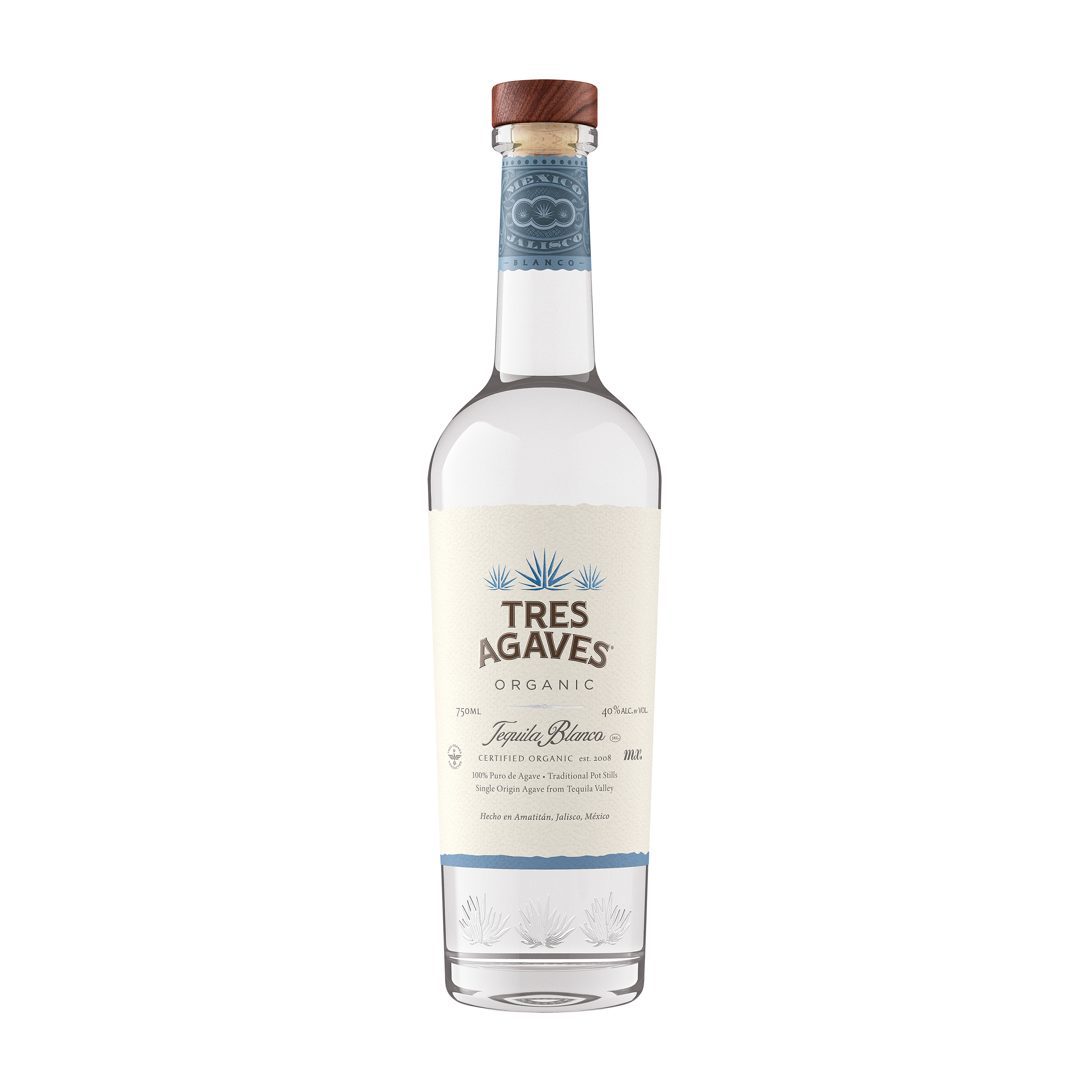
Tres Agaves Blanco
NOM 1614
Tres Agaves Blanco is a high quality, well priced organic tequila that is widely distributed, making it an easy option for anyone in the market for an organic product. It finished in first place for value. We paid $30 USD for the bottles used in this blind tasting, which is an absolute bargain.
It is made at the TTAP Distillery (NOM 1614) in Amatitán, Jalisco, and it drew mixed reactions from tasters. The aroma came across as distinctive and a bit unpredictable. Many picked up cooked agave, citrus, banana, cherry, and coconut, along with baking spices like cardamom, nutmeg, and cinnamon. Some described fruity tones, even “fruit punch candy”, while others caught earthy and funky notes of barnyard, leather, and wet hay. The overall impression was a mix of sweet fruit, spice, and rustic earth.
On the palate, Tres Agaves Blanco leans toward the sweet side. The texture varied from oily and creamy to thinner and greener, depending on who was tasting. Some found minerality and balance, while others felt that the agave was a bit muted. Even so, most agreed there’s a solid agave core that keeps it grounded and gives it structure.
The finish is soft and easy, with a touch of sweetness, mint, and a light bitter edge. Overall, Tres Agaves Blanco is a modern, fruit-forward organic tequila that trades traditional crispness for a rounder, flavorful style.

Dulce Vida Blanco (80 proof)
NOM 1443
Another widely available, super clean, affordable option is Dulce Vida Blanco’s 80-proof version, which scored #2 in value.
Dulce Vida Blanco, made at Grupo Industrial Tequilero de Los Altos de Jalisco (NOM 1443) in San Ignacio Cerro Gordo, is an organic tequila that highlights the bright, green side of highland agave. Tasters described the nose as fresh and lively, with cooked and raw agave, citrus zest, lemongrass, and wet stone. Many noticed light tropical fruit notes like peach, pear, and apple mixed with earthy and briny undertones. A few mentioned soft floral or lactic hints, similar to yogurt or white wine, which added depth and interest.
On the palate, Dulce Vida Blanco shows bold agave flavor, bright citrus, and a peppery kick. Common flavors included cooked agave, lime, grapefruit zest, minerality, anise, and light touches of vanilla or honey. Several tasters commented on an almost champagne-like texture, while others focused on its herbal core, but most agreed that it’s straightforward and easy to drink.
The finish is medium in length and lightly peppery with lingering notes of citrus, mineral, and agave. Overall, Dulce Vida Blanco stands out as a fresh and expressive organic tequila with natural energy and clean flavor. It captures the Highland terroir and will appeal to anyone who prefers a crisp, earthy blanco that feels pure and alive.

4 Copas Blanco
NOM 1480
Next up is 4 Copas Blanco, an old school favorite that has been in the organic tequila game from back before it was cool.
4 Copas Blanco, made at the Las Américas Distillery (NOM 1480) in Amatitán, Jalisco, is an organic tequila with plenty of personality and a texture that sets it apart. Tasters described the aroma as rich and expressive, full of cooked agave, vanilla, and floral notes. Sweet tropical and dessert-like tones added another layer of depth. Several tasters also picked up savory notes like olive brine, mushroom, and fresh corn tortilla that gave it an earthy edge. A few caught lactic or ethanol-forward hints, but others liked its soft, buttery warmth and rounded sweetness that reminded them of a pastry shop more than a still house.
On the palate, 4 Copas Blanco has a thick, oily mouthfeel and a lively mix of sweet, savory, and vegetal flavors.
The tequila’s texture drew a lot of praise because it is chewy and rich, with a sweetness and spice that hangs around, but a few tasters thought the ethanol felt too strong or the sweetness was a little too much. For some, it was a bold, modern blanco with real character; for others, it pushed the limits of what they typically expect for a blanco.
The finish is medium in length, with butter, citrus, and a faint peppery bite. Overall, 4 Copas Blanco is an expressive tequila that blends sweet agave richness with earthy depth. It won’t please every palate, but it’s a memorable pour for anyone who enjoys blancos with flavor and texture to spare.
Note: The brand is in the process of moving distilleries, and their future releases will be made at NOM 1522, Hacienda de Oro.
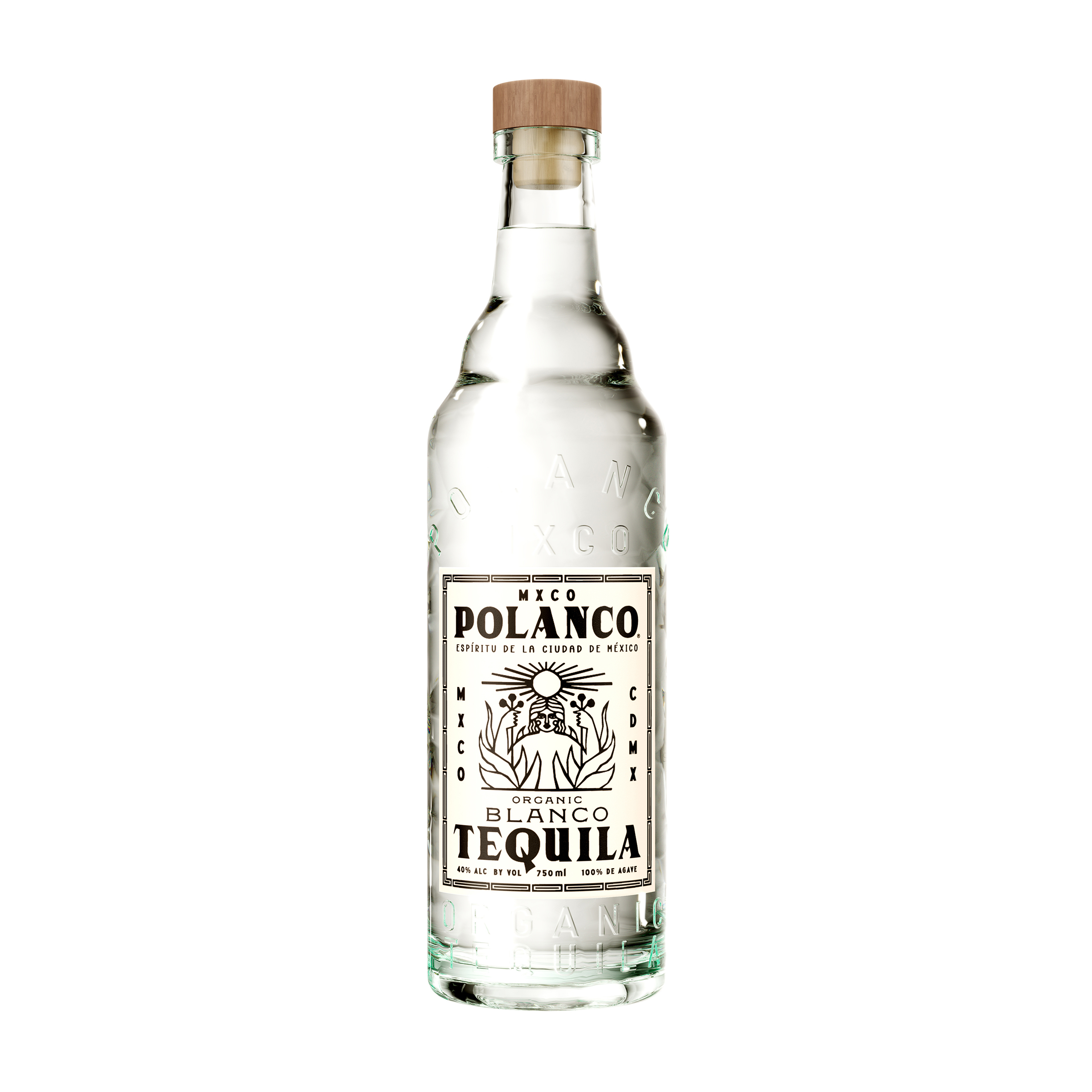
Polano Tequila Blanco
NOM 1633
And finally, we have Polanco Tequila Blanco, a new product on the market that took some effort to find. We eventually grabbed the bottles needed for this tasting from the brand’s website for $57.99 each.
Polanco Tequila Blanco is a barrel-rested tequila made at Tequilera De Los Altos Casa Loy (NOM 1633) in Ayotlán, Jalisco. It shows off an intriguing mix of highland sweetness and rustic character. Tasters described the aroma as both clean and floral, with moments that leaned slightly lactic. Most picked up sweet cooked agave, vanilla, citrus, and gentle spice, while others found greener notes like celery, bell pepper, and pine. Some detected dessert-like aromas such as lemon cake, cupcake, even cotton candy, balanced by minerality and a touch of ethanol.
On the palate, Polanco Blanco leans on the creamy side, balancing sweet agave, vanilla, cinnamon, and citrus zest with light herbal tones. Many tasters noticed its buttery or slightly oily mouthfeel, along with gentle minerality and a bright pepper spice. A few remarked that it drinks with the punch of a higher-proof tequila, with more flavor than expected at 40% ABV.
The finish is medium in length, trailing off with notes of mint, cinnamon, and citrus peel. Overall, Polanco Tequila Blanco feels bright and flavorful, a tequila that highlights the spicy, citrusy personality of their Los Altos agave.
Takeaways
Reading the results, there doesn’t appear to be a dramatic difference between organic products and what we see in other blind tasting experiments with non-organic products. There is still a wide variety of aromas and flavors to be found, and unique personalities for each product.
That being said, one of the 22 tasters correctly guessed the organic theme of the lineup, which was a first! Maybe there is a subtle element that can be detected by a sharp palate.
But for most drinkers who select organic tequilas, it is a choice with health, sustainability, and environmental impact in mind. The complexity of favors is a nice bonus.


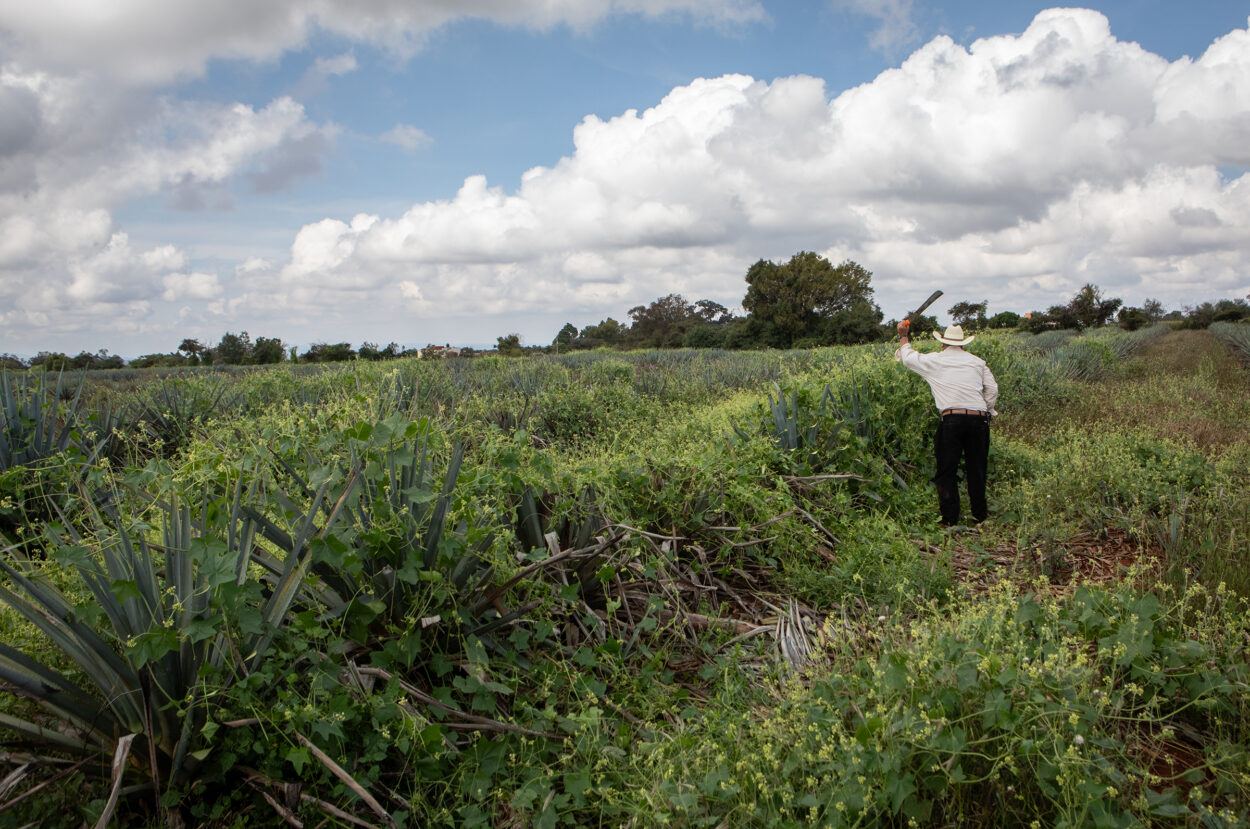


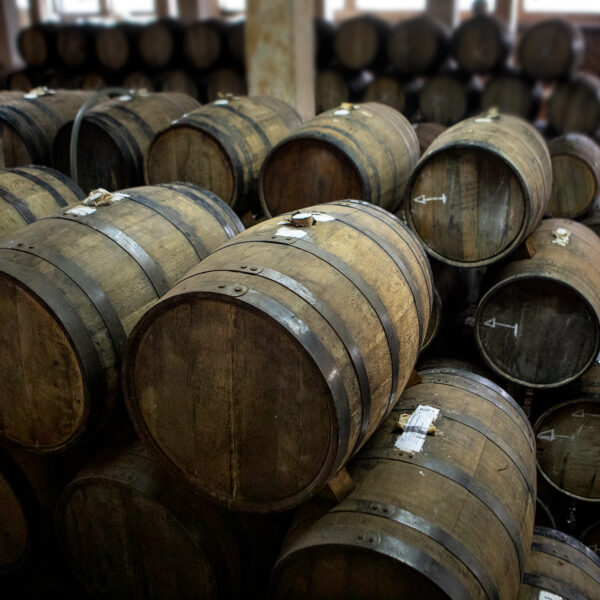
Love this blog!
Confirmed additive-free and on this list of Top 10 organics is:
Alto Canto, Nueveuno & Trujillo?
Very surprised Cazcanes didn’t make the Top 10.
Alquimia, though not on the confirmed additive-free list, they are, no? Very clean tasting.
Dulce Vida & Tres Agaves are good for margaritas- don’t drink it neat. Additives in them, no? Don’t score very high on your App.
Thanks in advance Grover!
Phil Bolton
Hi Phil. There’s no “additive free list” anymore. :-)
Cazcanes wasn’t in the list of 10 products we sent to tasters. The main purpose of this experiment was to get a product from 10 different organic distilleries to see how they would compare. But there’s nothing “bad” on this list, we intentionally selected high quality products.
It’s also interesting to see how products do in a blind tasting, which can be quite different when compared to ratings made when people know what they are. So I’m not surprised when they do better in blind tastings than the panel/community scores would suggest.
Maybe we should add you to the list of tasters who gets a kit, so you can experience it for yourself! Let me know if you’re interested.